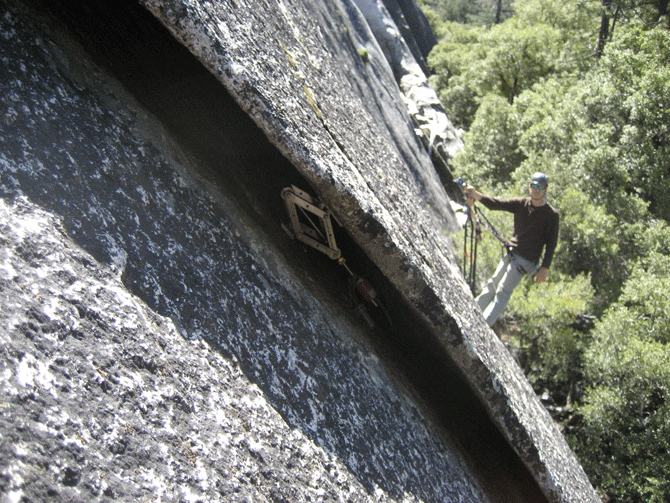What causes rockfall on calm days in summer?
Recent rainstorms remind many of us who commute to and from Yosemite Valley of the possibility of rockfall. When it rains and rocks fall we pretty much know that running water probably triggered it. Likewise we understand that earthquakes and the freezing and thawing of ice on cliffs can also trigger rockfall. However, there are other triggers that remain a mystery. Why is it that rocks also fall on perfectly calm summer afternoons with no apparent cause?
Some speculate that the heating and cooling of the rocks themselves may play a role in starting some of these unexplained rockfalls. The average person on the street might call this a theory but in science there are rigorous standards for an idea to qualify as a theory. In science we call carefully thought out speculation a hypothesis (or an educated guess in common parlance). Researchers design experiments to test a hypothesis.
Yosemite's park geologist Greg Stock, who has been studying rock fall in Yosemite Valley since 2006, noted that, "One question kept coming up: What triggers rock fall when there is no obvious explanation?" He had also heard from rock climbers that safety gear placed in cracks had moved during the day. Could this be because the crack had widened? Stock and Brian Collins, a geotechnical engineer with the US Geological Survey, had discussed the idea that heat expansion of granite may trigger rockfall.
One day while climbing on the north wall of Yosemite Valley Greg found the perfect crack for his experiment. There was a flake of rock about 60 feet tall and 20 feet wide. This rock was attached at the top and bottom but had a crack between it and the cliff face. The crack narrowed at either end and was widest in the middle. Greg wondered, "Would the crack expand and contract as the rock warmed and cooled in the course of a day? And if so by how much?"
Greg spoke with Brian about these ideas and Brian came up with a design for an instrument that could be put inside the crack. If the crack expanded or contracted, it could measure by how much. They had no idea how much movement to expect so they calibrated the device to measure to within one hundredth of a millimeter.
The results astounded Brian and Greg. The crack did expand, and much more than expected. At the center of the crack where there was the greatest movement, the flake of granite bowed outward not just a few hundredths of a millimeter but as much as 10 millimeters (just under 0.5 inch). Every day it would bow outward and then at night as the rock cooled it would bend back. The greatest amount of movement away from the cliff was reached on summer afternoons. Not only that but in the course of the last two and a half years the crack has gotten wider by about two millimeters. So if cracks can move like
this each day, and move farther and farther outwards from the cliff each year, this might explain how rocks eventually detach from the cliffs in rockfalls.
So now we have a hypothesis proven correct as well as some measurements of how much a crack may widen during the day. These facts pertain to only one crack on Yosemite's many cliffs, but may help us understand why rock fall can happen on perfectly warm, dry days of summer. Eventually enough data from many experiments may allow us to have a theory of thermal expansion of granite as a trigger for rockfall on perfectly calm, warm days.

Crackmeter installation in Yosemite Valley measuring daily changes in cracks in the granite.
